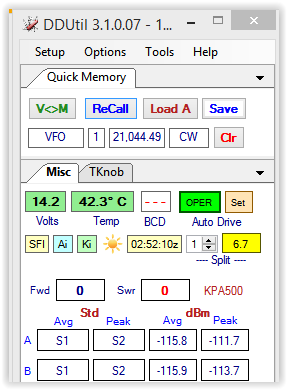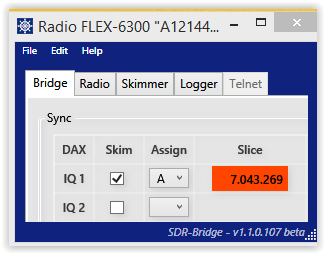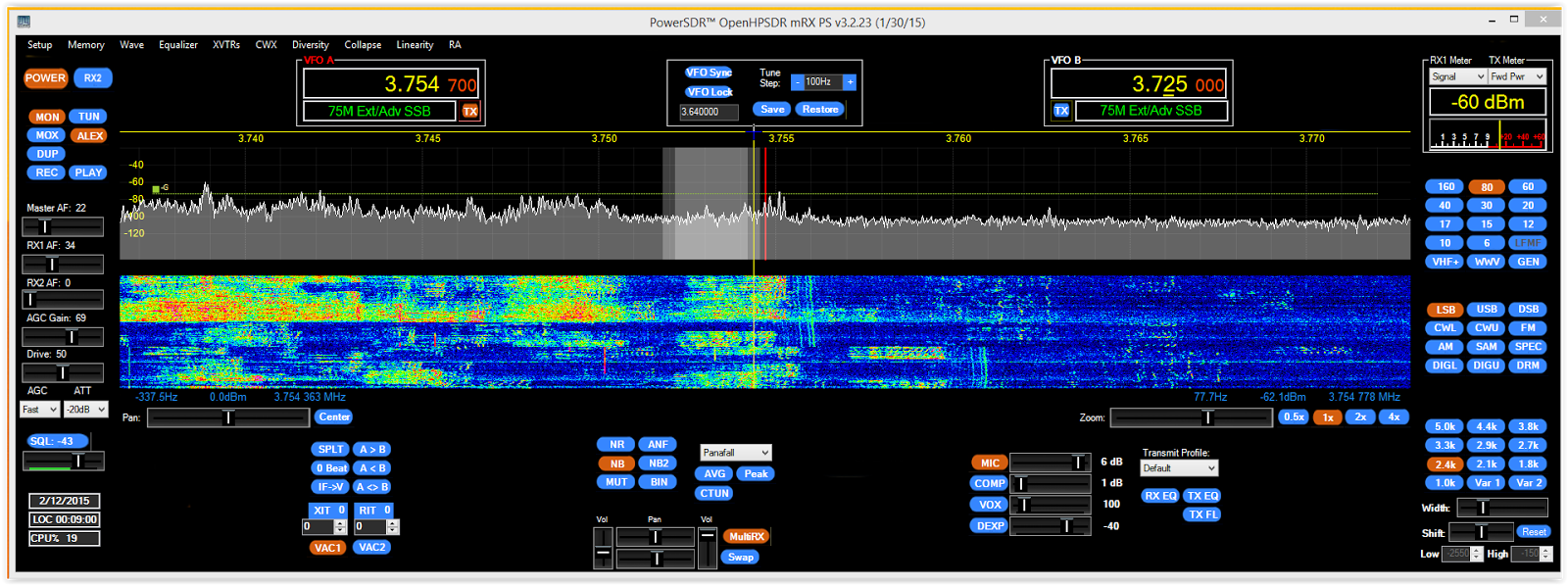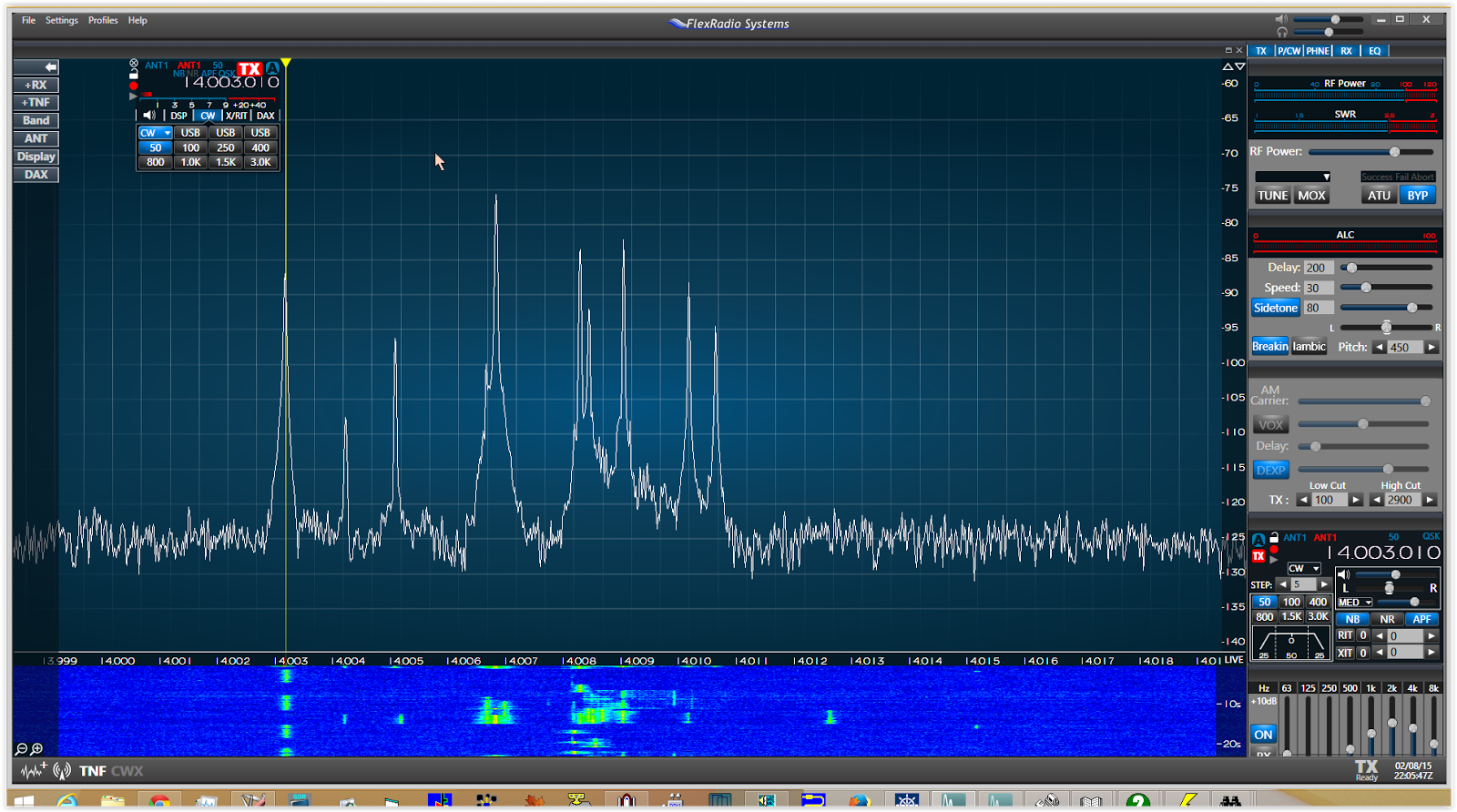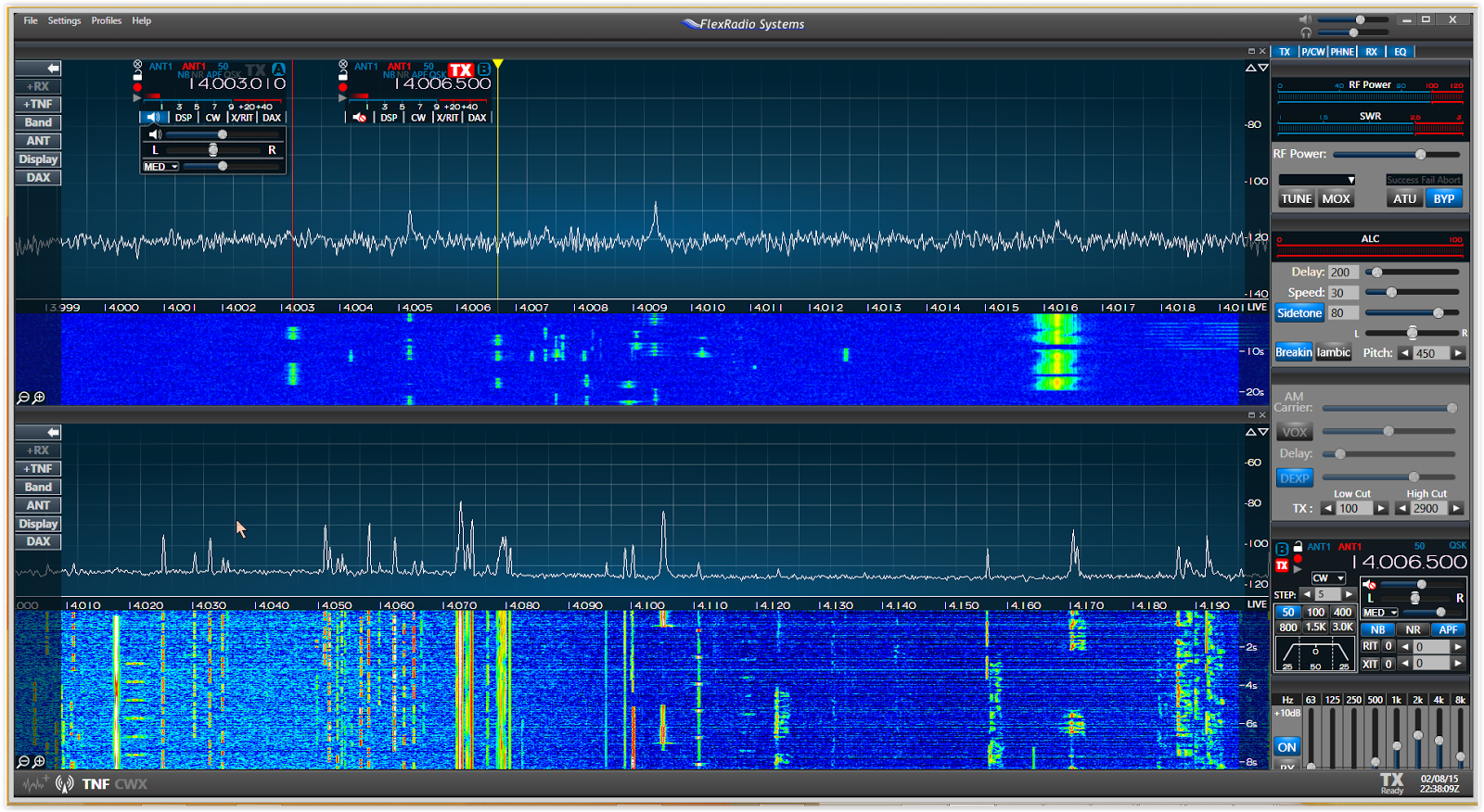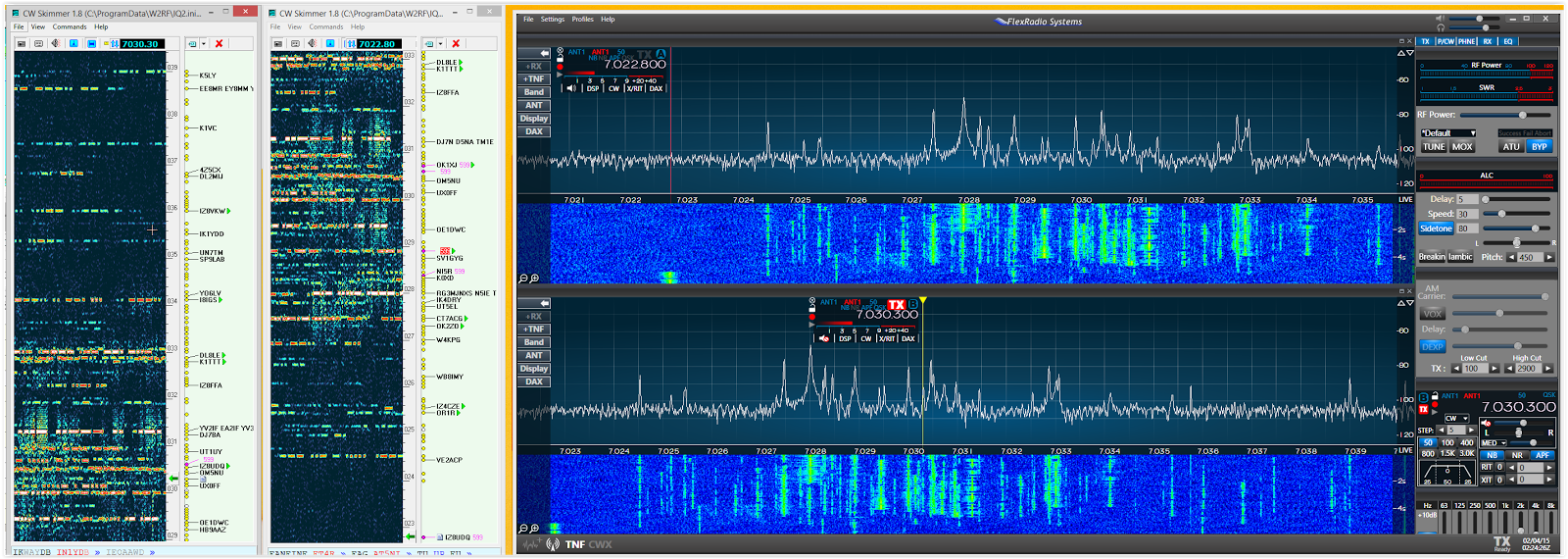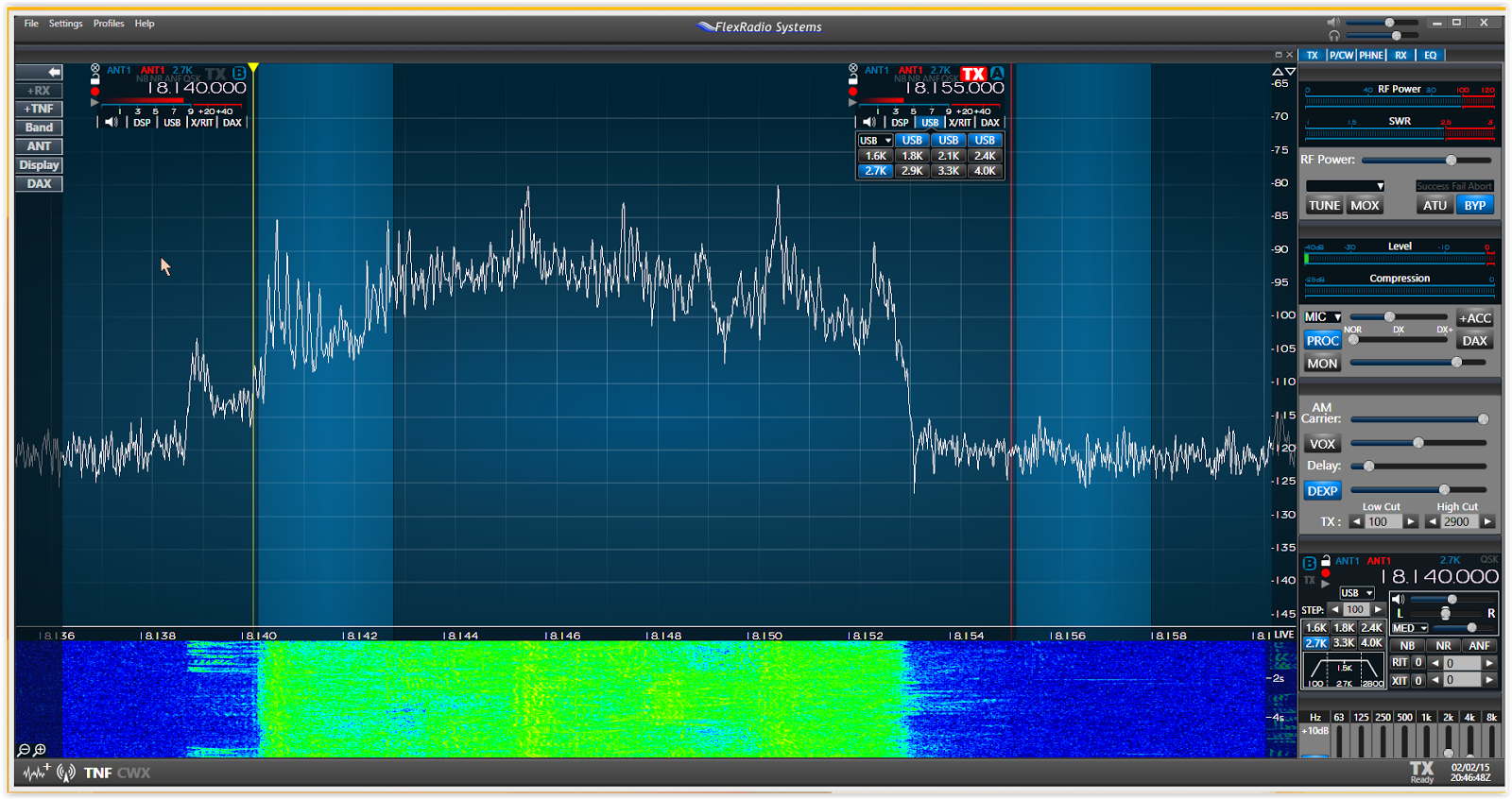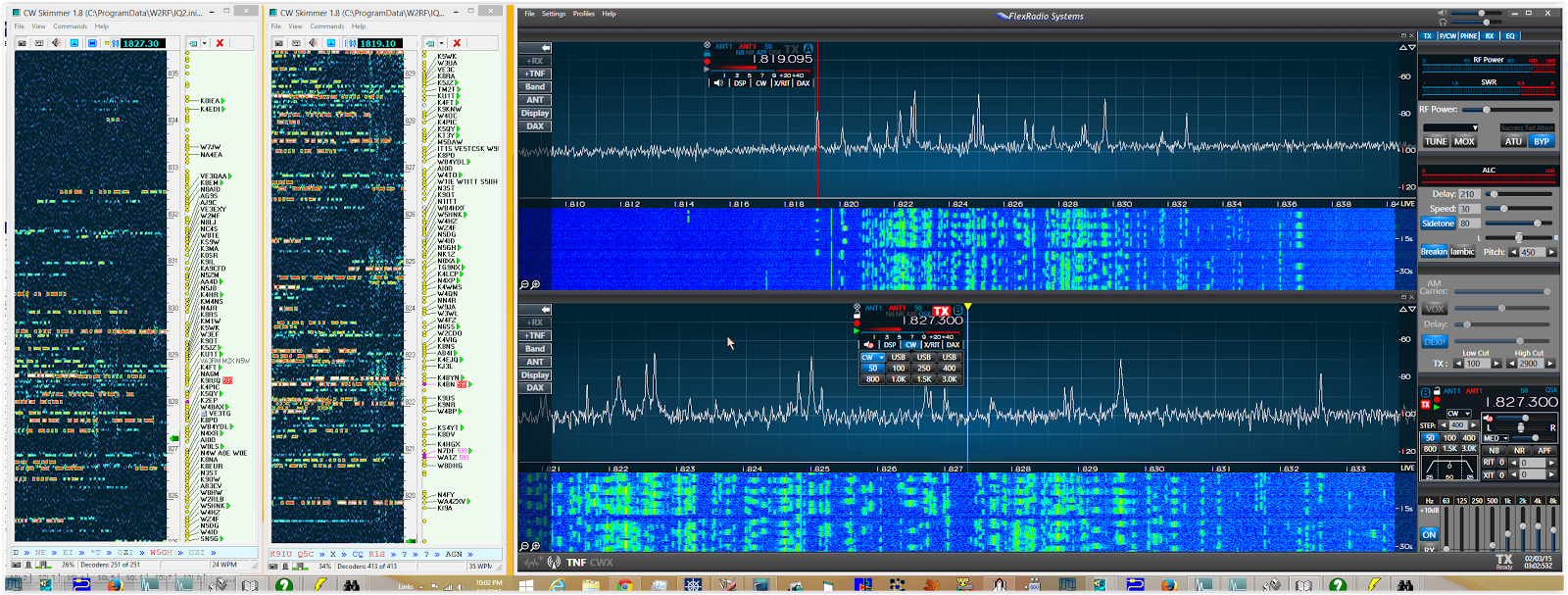The ARRL CW International DX contest is on the air!
I'm not a big contester but Flex is slowly honing its contest chops. I mostly play around in this kind of contest to look for new DXCC contacts. Recently on EHAM there was a discussion regarding
light weight rigs to take on DX pedition. I made a little argument for the Flex 6300. It weighs 10 lbs and is 11.75" x 13" x 3.875".
It's only 1.5 lb heavier than the TS 480. I also use a Samlex SEC-1223 power supply which is very quiet RF hash-wise, is 8.19" x 7.28" x 2.4" and weighs 3.5 lbs.
The radio puts out 100W and has a very wide range tuner in terms of matching capability. The real power of the radio of course is its software and its ability to interface with 3rd party software. I decided to showcase the ARRL contest since this is a high RF, high station count environment similar to a DX pedition. Here is my contest setup for this contest
I purposely set this up so it would all fit on one screen like you would have using a laptop in a DXpedition situation. To run this I am using SmartSDR (SSDR) which is the "radio/panadapter/waterfall box. Next to SSDR is CW Skimmer, and next to the Skimmer is WriteLog's bandmap. The bandmap is entirely populated by Skimmer decoded signals, in other words signals strictly taken from my antenna. I do not have a cluster client active. Here is a closer look at the skimmer bandmap combo:
Writelog is set up to color DX stations differently from US stations in this contest. As you work stations the colors change so you can tell at a glance what has already been worked. Skimmer is not a perfect decoder but it does a pretty good job. You have to confirm everything by ear. My logging program is Writelog
One of the concerns in the EHAM post was related to constantly clicking windows. Flex has addressed this issue by incorporating an auto focus feature in SmartSDR
What the hell does that mean?? It means that when you click off of writelog to say the panadapter or the waterfall or Skimmer or the bandmap, the focus automatically returns to the Writelog data entry line 100 ms later. In this shot I am clicking the waterfall in SSDR
Notice how the bottom of the SSDR screen is highlighted. 100ms after I release the click this happens
Notice how the bottom of SSDR is covered by Writelog which is now in focus and how the black cursor in the data entry line is flashing ready for entry. I also use the FlexControl
to tune the radio. The Flex control is always connected to the radio and is focus independent of any window chosen.
These programs do not use CAT to communicate. The 6300 (the actual box) is a server. It connects to the computer via a GB ethernet port. As a server it can connect to several independent clients on the computer. Each client has its own IP address. One such client is the SSDR software we see on the screen. Another client is
SDR-Bridge written by Ed W2RF
This is a piece of free software that integrates other software like
Writelog, Skimmer, the
ve7cc cluster client into a single set of components and presents that integrated data to the 6300 as an independent client apart from SSDR. Flex has written an API for its radio which takes communications between programs out of the stone age (CAT) and brings it to present day best practice
A third client I use is
DDUTIL V3 written by Steve K5FR. This software integrates the rest of the station to the 6300 like amps, watt meters, steppir antennas, rotors etc. It also automatically will set drive levels for up to 2 amps and provides a interface for the FlexControl. It also acts as a relay station such that you can connect several CAT based programs to the Flex system. This gives you very powerful legacy access to older CAT based programs. Suffice it to say the scope of these pieces of software are significant and outstrip the intent of this blog post, but I included URL's so you can review the feature set for yourself.
Skimmer, Writelog and ve7cc interface to SDR-Bridge over a telnet loop bypassing CAT commands, so the system is CAT independent and therefore extremely reliable and extremely fast and extremely customizable.
Here is an example:
Let's say you're the DX on 7.002. You don't want that freq to move so you lock VFO A and and set it to be the transmit VFO. VFO B then is your receiver VFO. You can tune this by clicking callsigns on the bandmap or by clicking callsigns on skimmer or by tuning the FlexControl as you would with a regular radio, or you can grab the yellow flag in VFO B with a mouse and make a big excursion if desired. If you click skimmer or the band map the decoded info is automatically loaded into writelog. As soon as you let go of a click the focus snaps back to the data entry point in writelog and you can enter data. There is no mad clicking between programs and it is very smooth to use.

In this shot I have the 2 VFO's in the upper panadapter which is set for moderate granularity of 2 khz per division so things are nicely spaced out. In the second panadapter the entire involved spectrum is displayed so those Tromelin style pileups can be watched from top to bottom. In addition you can watch the DQRM on your transmit freq and make adjustments. You have a complete and constant view of what is going on while you continue to make contacts. You don't have to do any switching between TX and RX freqs to monitor things.
What about calling for EU in the face of a wall of NA or vis versa? Skimmer and band map make it easy to find stations in specific regions. Skimmer decodes the bandwidth defined in its sampling rate
In my case that's 96khz of bandwidth. It however does not display that much bandwidth. That data is there however for display as you move up and down the band. You just look at the screen K K W N JA JA LZ 9A all of the prefixes are displayed and you just click on the station (region) you wish to work and ignore those you don't.
One of the requirements in the EHAM post was low cable count, i.e. simple to setup. This set up has a 6300, flex control, power supply, headphones, mic, key and coax/antenna. You can add a winkey if you like. Less than 5 minutes setup. The radio allows 2 antennas and a separate RX antenna as in beverages or other exotic antennas for low bands as well. If you want digital like RTTY simply fire up the client of your choice. The 6300 has audio software to send TX and RX audio signals (called DAX for digital audio exchange) between the radio and your digital client and the control data for the client like freq and PTT are over software serial cables called SmartCAT.
You of course can use as much or as little of this as you like. If your a troglodyte and it's just you, your knob and your key and a paper log then the radio will do that in spades. It's up to you to design your experience. This is but one possible deployment. There are other possibilities as well. The latest version of SSDR is very easy on computer clicks. I run an intel plain vanilla 65w i7 using on-board 4600 graphics and can run up to 3 monitors. I've run the system on a i3 and a i5 as well. A reasonable modern laptop would run this FB no need to tune any cores. Here is how stressed my system is with everything running plus wifi and browser
In other words you don't need a workstation to run this system by any means
73 W9OY

